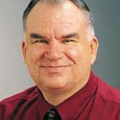Australian explorers appear to have a gas-condensate discovery after having tested the first two of eight potential hydrocarbon pay zones in California’s San Joaquin basin.
Neon Energy Ltd., Perth, and Solimar Energy Ltd., Melbourne, have run two production tests on the Fruitvale shale and Lower Stevens sandstone at the Paloma Deep Sidetrack-2 wellbore.
The well went to a total depth of 13,320 ft, 310 ft into the Fruitvale shale on the west side of giant Paloma oil and gas field in Kern County (OGJ Online, Nov. 30, 2011).
On the two production tests run to date, hydrocarbons flowed to surface unassisted at maximum rates of 1.9 MMcfd of gas and 226 b/d of condensate, but downhole operational issues have prevented the companies from determining which interval delivered the hydrocarbons, Solimar said.
Debris obstructed and hindered the flow of hydrocarbons and prevented stabilized rates of production from being achieved. Encouraged, the companies have rigged up a coiled tubing workover unit to clean up the wellbore before resuming tests of the Lower Stevens.
Neon previously said the potential pay intervals to be production-tested in this well or future wells include the Paloma sands, Middle Stevens, Round Mountain, Lower Stevens, Fruitvale shale, Western Flank, Antelope shale, Lower Antelope shale, and Tulare sands. It said it encountered a column of more than 200 ft of continuous potential oil pay with a high reservoir net to gross ratio in the Lower Stevens.
Neon is operator with 75% working interest in the project. Solimar is participating with a 25% working interest and is paying a promoted share of the dry hole and completion-testing costs up to an agreed cost cap.
About the Author

Alan Petzet
Chief Editor Exploration
Alan Petzet is Chief Editor-Exploration of Oil & Gas Journal in Houston. He is editor of the Weekly E&D Newsletter, emailed to OGJ subscribers, and a regular contributor to the OGJ Online subscriber website.
Petzet joined OGJ in 1981 after 13 years in the Tulsa World business-oil department. He was named OGJ Exploration Editor in 1990. A native of Tulsa, he has a BA in journalism from the University of Tulsa.